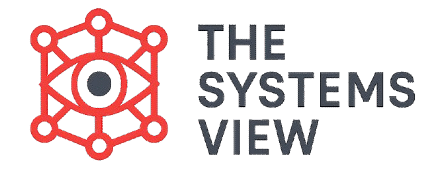In our last article, we talked about what a learning organization is. It’s a group that never stops learning, changing, and getting better. But how does a group actually become this way? How do they really learn together?
A well-known expert named Peter Senge gave us a clear map for this. He wrote a famous book called “The Fifth Discipline: The Art & Practice of The Learning Organization” in 1990. In this book, he shared five important ways that people and teams can learn together to make their organizations stronger.
These five ways, or “disciplines,” are not just separate tools. They work together, like different parts of a team. When people practice them all the time, they help an organization see the whole picture. They also help it question old ideas, agree on common goals, and learn well as a team.
Who is Peter Senge?
Peter Senge is an American expert. He was a director at a special learning center at MIT’s Sloan School of Management. His ideas have had a big impact on how we think about groups and how they learn. He believes that true learning in a group needs a new way of thinking and acting from everyone involved. His “five disciplines” give us a clear path to do this.
What Are Peter Senge’s 5 Disciplines?
Senge said that for a group to truly become a learning organization, its members need to practice these five main ways of working:
- Personal Mastery
- Mental Models
- Shared Vision
- Team Learning
- Systems Thinking
Let’s take a quick look at what each one means.
1. Personal Mastery
This idea is about each person growing and learning all the time. It means that people in the group are always trying to get better at what they do. They want to improve their skills and understand what is most important to them. It’s about having a personal goal for what you want to achieve. It also means being honest about what you know and don’t know right now.
Important: Personal Mastery is not about being better than others. It’s about getting better at what you do and creating the results you truly want. It helps you find a deeper meaning in your work.
2. Mental Models
Mental models are the deep thoughts, beliefs, and pictures we have in our minds. They control how we see the world and how we act. Often, we don’t even know these thoughts are there. This discipline asks people and teams to become aware of these hidden models. It asks them to test these ideas and be open to changing them. It’s about asking “why do we always do things this way?” and being open to new ideas. When people can talk openly about these hidden beliefs, it leads to smarter choices and new ideas.
3. Shared Vision
A shared vision means that everyone in the group has the same clear picture of the future they want to create. Everyone truly believes in this goal and wants to make it happen. It’s not just a statement that leaders make and give to everyone else. Instead, it grows from the hopes and ideas of many people. This creates a strong feeling of shared purpose and excitement. When everyone works towards a goal they all believe in, it creates a powerful drive that is much stronger than just following rules.
4. Team Learning
This discipline looks at how groups of people learn together. It teaches teams how to talk and discuss things well. Team learning is more than just individual people learning. It means putting aside your own beliefs for a moment and thinking together. This helps the team find new ideas and answers that one person might miss alone. It’s about building trust and talking openly. This way, teams can truly work together and create new things.
5. Systems Thinking
Peter Senge calls this the “Fifth Discipline” because he believes it connects all the others. Systems thinking is the ability to see the whole picture. It means understanding how different parts of a group (or any system) are connected and how they affect each other over time. Instead of just reacting to one problem, people who use systems thinking look for patterns and root causes. This discipline helps people realize that “today’s problems often come from yesterday’s solutions.” It helps them find small changes that can make big, lasting improvements in the whole system.
Why Are These Disciplines Important?
These five disciplines are very important. They give a clear way for groups to keep learning and changing. In a world that is always changing, being able to learn faster than others is a huge advantage. When groups practice these disciplines, they can:
- Solve problems better: By finding root causes and understanding how things are connected.
- Create more new ideas: By encouraging new ways of thinking and teamwork.
- Get more commitment: Because of shared goals and personal growth.
- Become stronger: By changing easily when new problems or challenges appear.
How They Work Together
Senge teaches that the five disciplines are all connected. Systems Thinking helps you see the whole picture, showing how each discipline fits. Personal Mastery helps each person want to learn. Mental Models help us question our old ways of thinking. Shared Vision creates the main goal, and Team Learning helps groups think and work together to reach that goal. They create a strong cycle of learning and getting better that truly changes a group from the inside.
Frequently Asked Questions (FAQs)
Q1: Are these disciplines only for big companies?
No, Peter Senge’s 5 Disciplines can be used by any group or organization, no matter its size. Whether it’s a small team, a charity, or a big company, the ideas of learning and changing are useful for everyone.
Q2: Do we have to master all five disciplines at once?
Senge says these are things you practice for your whole life. You don’t just “finish” them. Groups usually start by working on one or two disciplines and then slowly learn the others. The main thing is to keep practicing them over time.
Q3: Is Systems Thinking truly the “fifth” discipline? A:
Senge called it the “Fifth Discipline” because he sees it as the most important one. It brings all the other four disciplines together. It’s like the special lens through which you understand how the other four parts work together to create a true learning system.
Conclusion
Peter Senge’s 5 Disciplines offer a powerful way for any group to become smart and adapt well. They are more than just training. They focus on deep personal and group practices that change how people, teams, and the whole group thinks and acts. By working on Personal Mastery, questioning Mental Models, building a Shared Vision, doing Team Learning, and especially using Systems Thinking, groups can reach their full potential. This helps them deal with today’s complex world in a smarter and more effective way.



